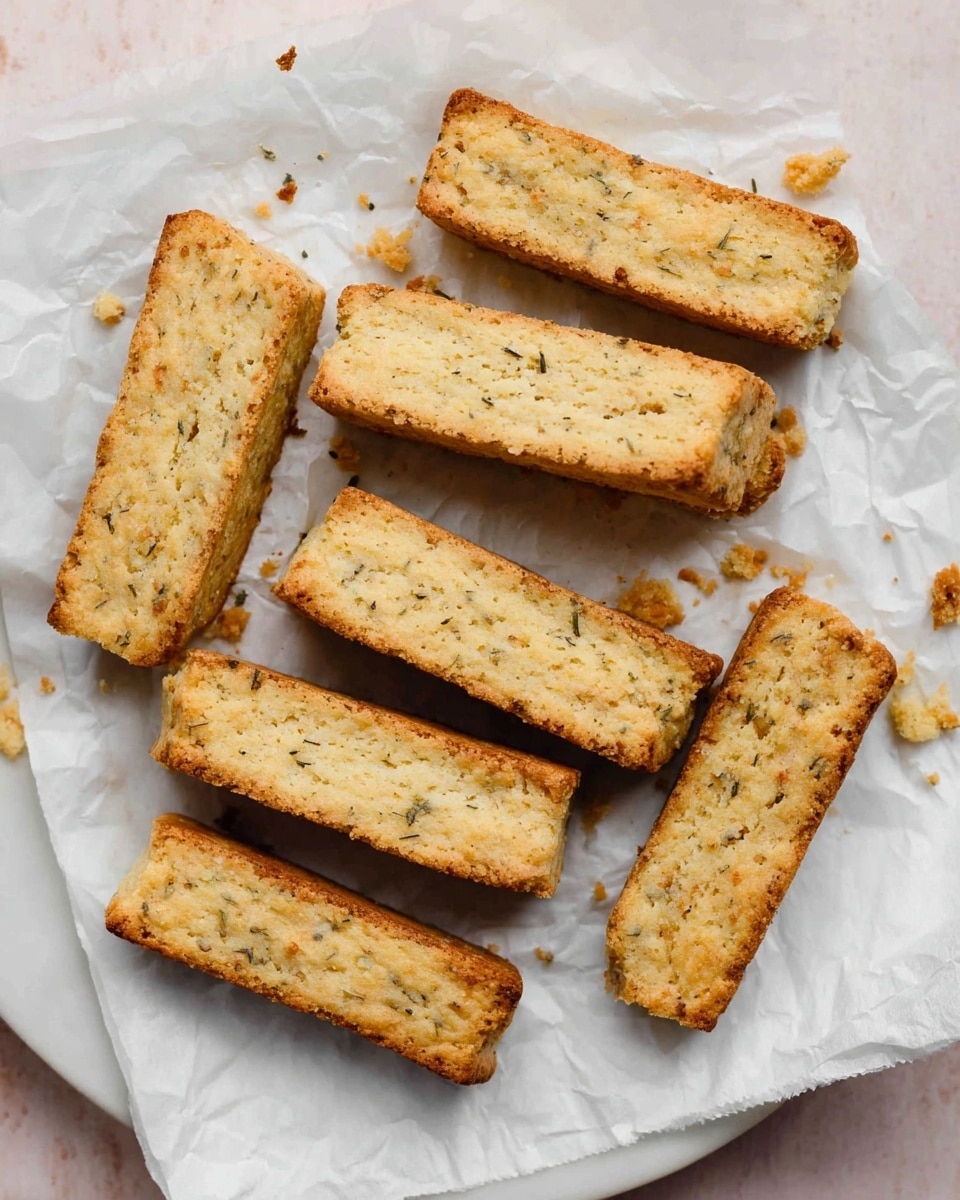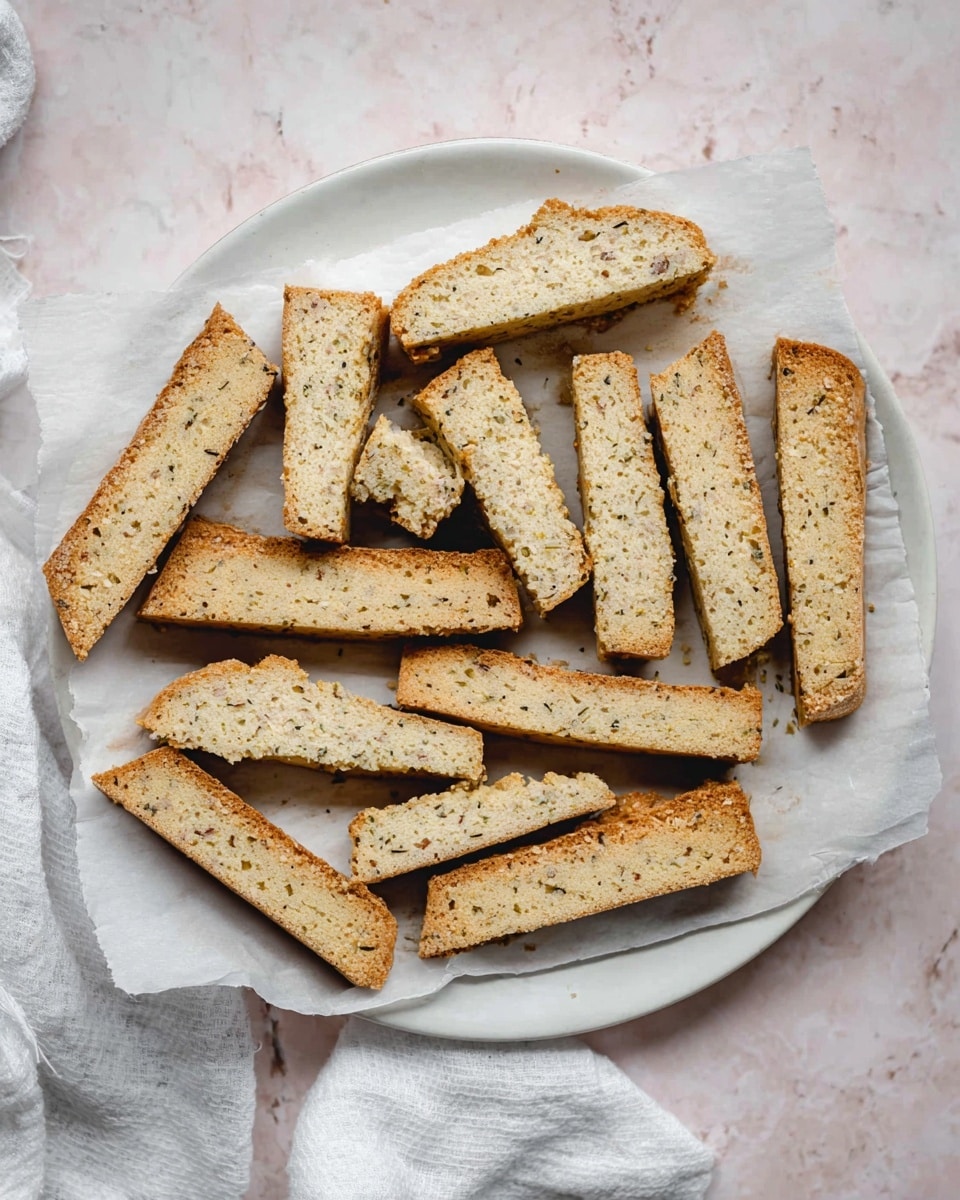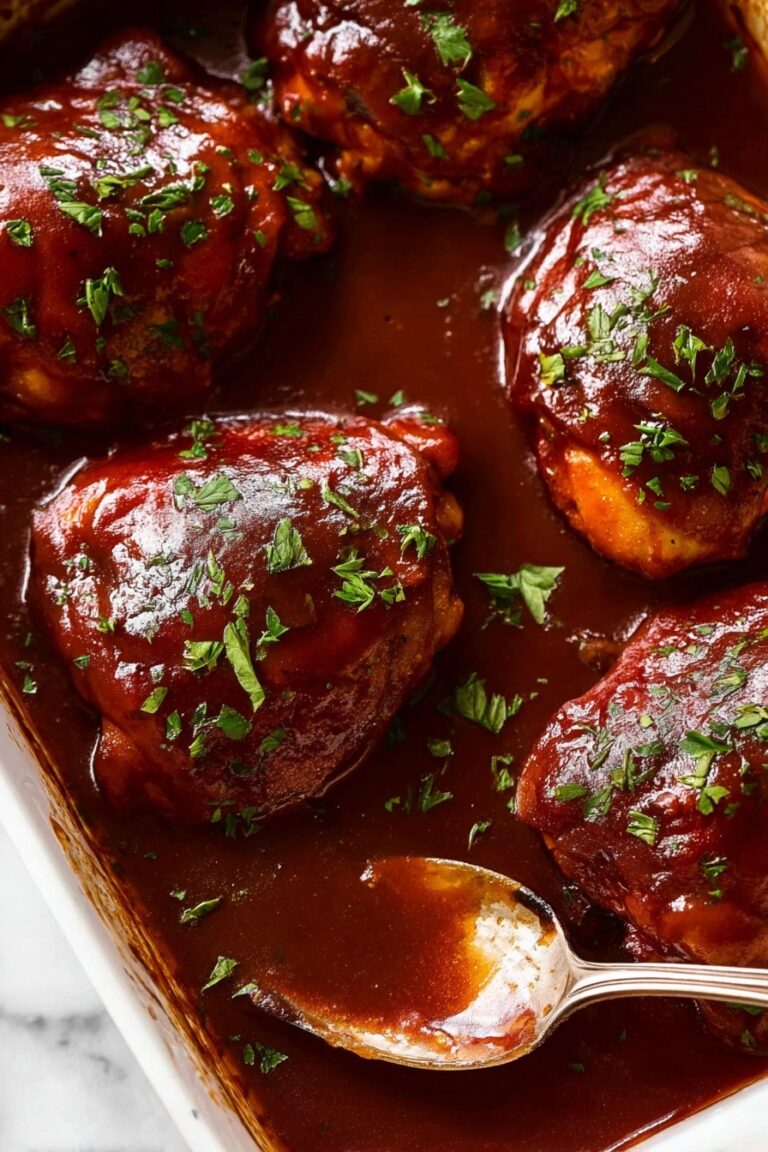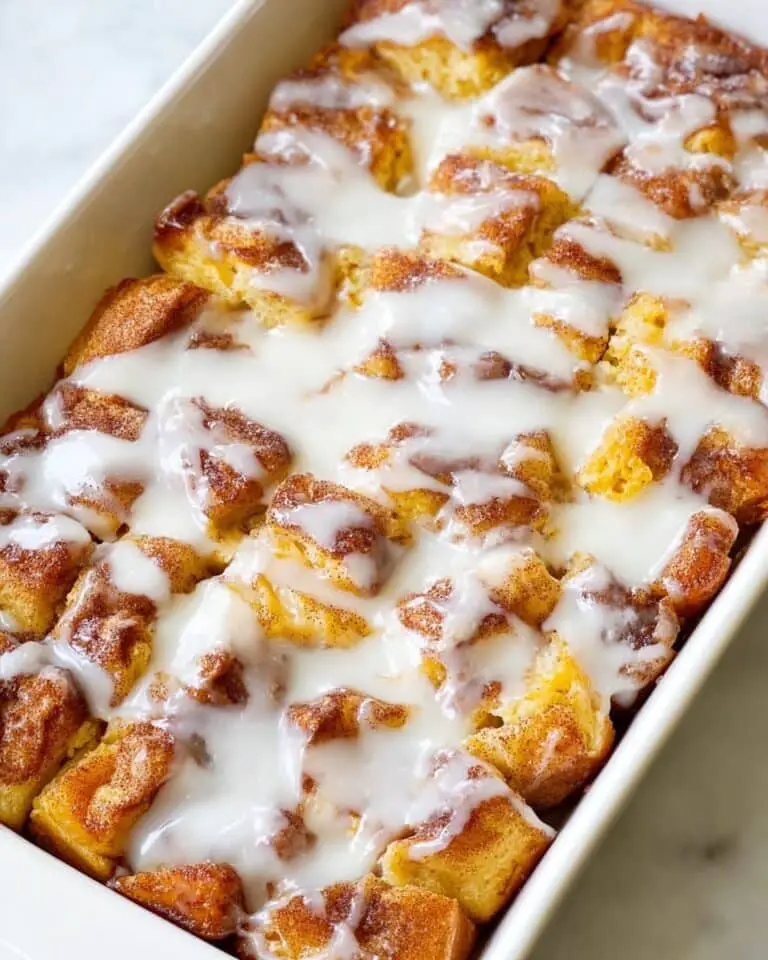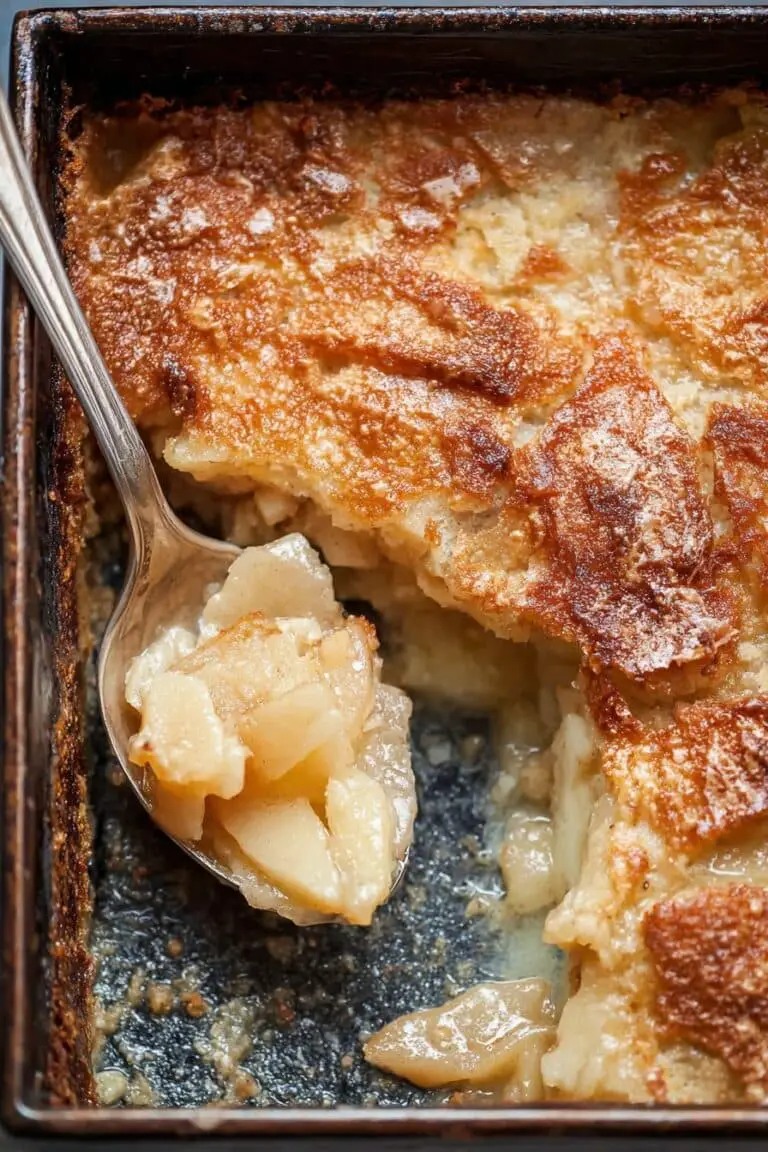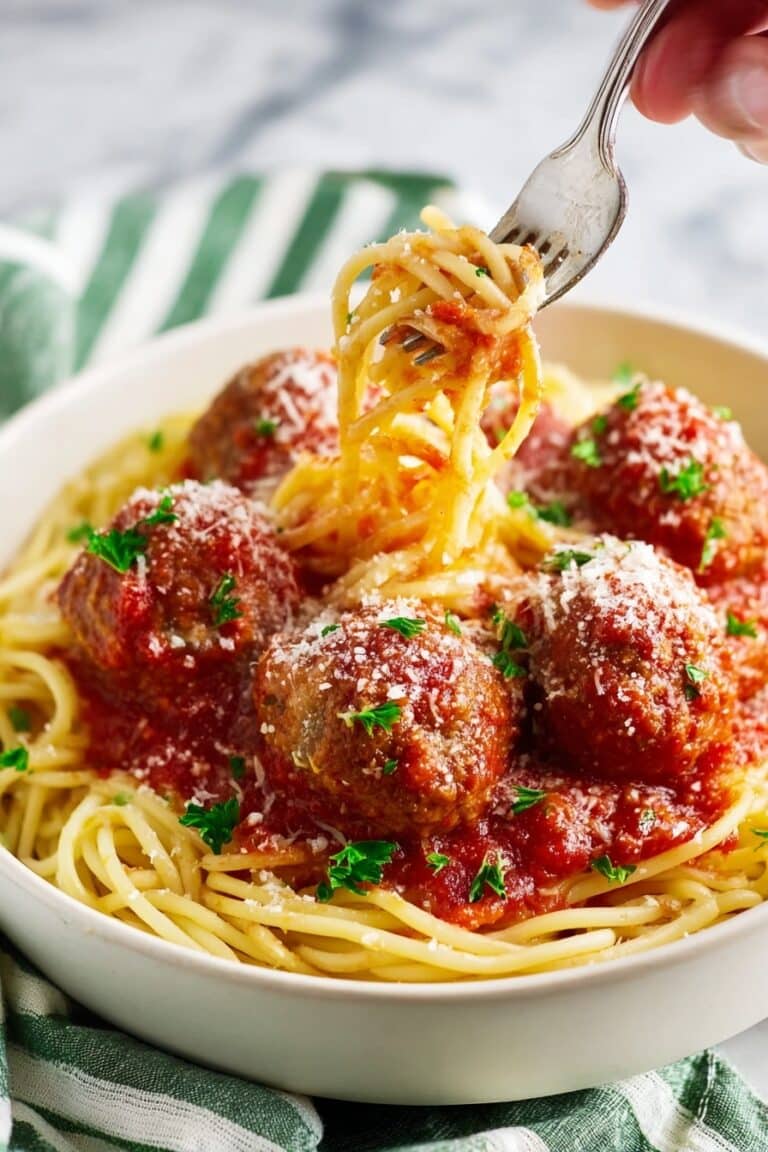I absolutely love this Salted Rosemary Shortbread Recipe because it brings a beautiful balance of buttery richness, aromatic rosemary, and a delicate touch of saltiness that just elevates the whole cookie experience. When I first tried this recipe, I was amazed at how the flaky sea salt on top perfectly contrasted the fragrant herbal notes, making every bite melt in my mouth.
You’ll find that this shortbread is perfect for those cozy afternoons when you want a snack that’s a little special but not fussy. Whether you’re serving it with tea, coffee, or as a surprising twist to your dessert platter, this Salted Rosemary Shortbread Recipe is a winner. Plus, it’s easy to make, yet it feels upscale enough to impress guests.
Why You’ll Love This Recipe
- Perfect Flavor Balance: The combination of fresh rosemary and flaky sea salt gives a savory twist to traditional shortbread.
- Simple Ingredients: You likely have most of these pantry staples on hand already.
- Great Make-Ahead Option: You can bake and store these cookies up to a week or freeze them for later enjoyment.
- Impressively Elegant: Looks and tastes like a fancy bakery treat without the fuss.
Ingredients You’ll Need
These ingredients work beautifully together to create a shortbread that’s crisp yet tender, with herby rosemary and a subtle hint of citrus from the grapefruit zest, enhancing those flavors even more.
- Unbleached all-purpose flour: Provides the structure while keeping the texture tender.
- Rice flour: Adds a slightly crisp edge to the shortbread — a secret trick I keep coming back to.
- Kosher salt: Just the right amount to enhance flavor without overpowering.
- Fresh rosemary: Finely chopped for that lovely herbal aroma and flavor.
- Unsalted butter: Room temperature is key for easy creaming and fluffy dough.
- Granulated sugar: Divided usage helps sweeten while creating a nice crust on top.
- Finely grated grapefruit zest: A bright citrus note that makes these cookies uniquely refreshing.
- Flaky sea salt: Sprinkled on top for that perfect final touch of savory crunch.
Variations
I love making this Salted Rosemary Shortbread Recipe my own by experimenting with different citrus zests or herbs. It’s a wonderfully adaptable base, so don’t hesitate to tailor it to your taste and seasonal ingredients.
- Variation: Swapping grapefruit zest for lemon or orange zest adds a different but equally delightful brightness—I tried lemon once, and it was a hit at a brunch gathering.
- Variation: Adding a teaspoon of finely ground black pepper alongside rosemary brings a subtle warmth that’s surprisingly addictive.
- Variation: For a gluten-free twist, replace flours with a blend of gluten-free flours keeping the rice flour as part of the mix; it works well and still bakes up beautifully.
How to Make Salted Rosemary Shortbread Recipe
Step 1: Prep your pan and mix dry ingredients
First things first, line an 8 x 8-inch baking pan with parchment paper, making sure to leave a nice overhang on two sides — this is a total game changer for lifting out the shortbread later. Then, whisk together your all-purpose flour, rice flour, chopped rosemary, and kosher salt in a bowl and set it aside. This step lets the rosemary distribute evenly, so every bite has that lovely herbal note.
Step 2: Cream butter, sugar, and grapefruit zest
In a stand mixer fitted with the paddle attachment, beat room-temperature unsalted butter, half the sugar, and the grapefruit zest on medium-high speed. This takes about 2 to 3 minutes until it’s light and fluffy — scraping down the sides often helps everything mix thoroughly. This step is where the buttery base gets infused with that bright citrus flavor, which you don’t want to miss.
Step 3: Combine dry ingredients with wet
On low speed, add your flour mixture to the butter mixture until it looks crumbly, then bump up to medium speed for about 2 more minutes until everything comes together into a smooth dough. Scraping the bowl as you go prevents any flour pockets and keeps the rosemary well mixed. Once it looks like a unified dough, transfer it to your prepared pan and press evenly with an offset spatula — this ensures even thickness and smooth top. Pop it into the fridge for at least an hour to firm up, which makes cutting so much easier later.
Step 4: Bake with final topping
Preheat your oven to 375°F (190°C). Take the chilled dough and prick it all over with a fork — this prevents bubbling during baking. Sprinkle with the remaining tablespoon of sugar and then a generous layer of flaky sea salt. Bake for 30 to 35 minutes until the edges are golden brown and the surface has that warm golden hue. This is when the magic happens, and the salty crunch starts to shine.
Step 5: Cut, cool, and separate
Right after removing the shortbread from the oven, cut it in the pan into strips and then into smaller rectangles to create your cookies — I find that cutting while still warm makes cleaner edges. Let the pan cool for 10 minutes before running a thin spatula around the edges to loosen the cookies so they don’t stick. Then allow everything to cool completely; once cool, you can lift the entire sheet out using the parchment and break apart the cookies fully.
Step 6: Make ahead tips
If you want to get ahead of the game, these cookies hold up beautifully—baked, cut, and cooled—you can store them for a week at room temperature or freeze for up to 3 months, making it a convenient option for holiday prepping or gifting.
Pro Tips for Making Salted Rosemary Shortbread Recipe
- Use Cold Butter Carefully: While room temperature butter is best for creaming, avoid letting it get too soft or greasy to prevent a greasy dough.
- Chill Dough Thoroughly: Don’t skip chilling; it helps with easier cutting and prevents spreading during baking.
- Choose Flaky Sea Salt: Coarse flakes instead of fine table salt add delightful texture and bursts of flavor atop your cookies.
- Cut While Warm: Cutting immediately after baking results in cleaner edges and neater squares, avoiding crumbling.
How to Serve Salted Rosemary Shortbread Recipe
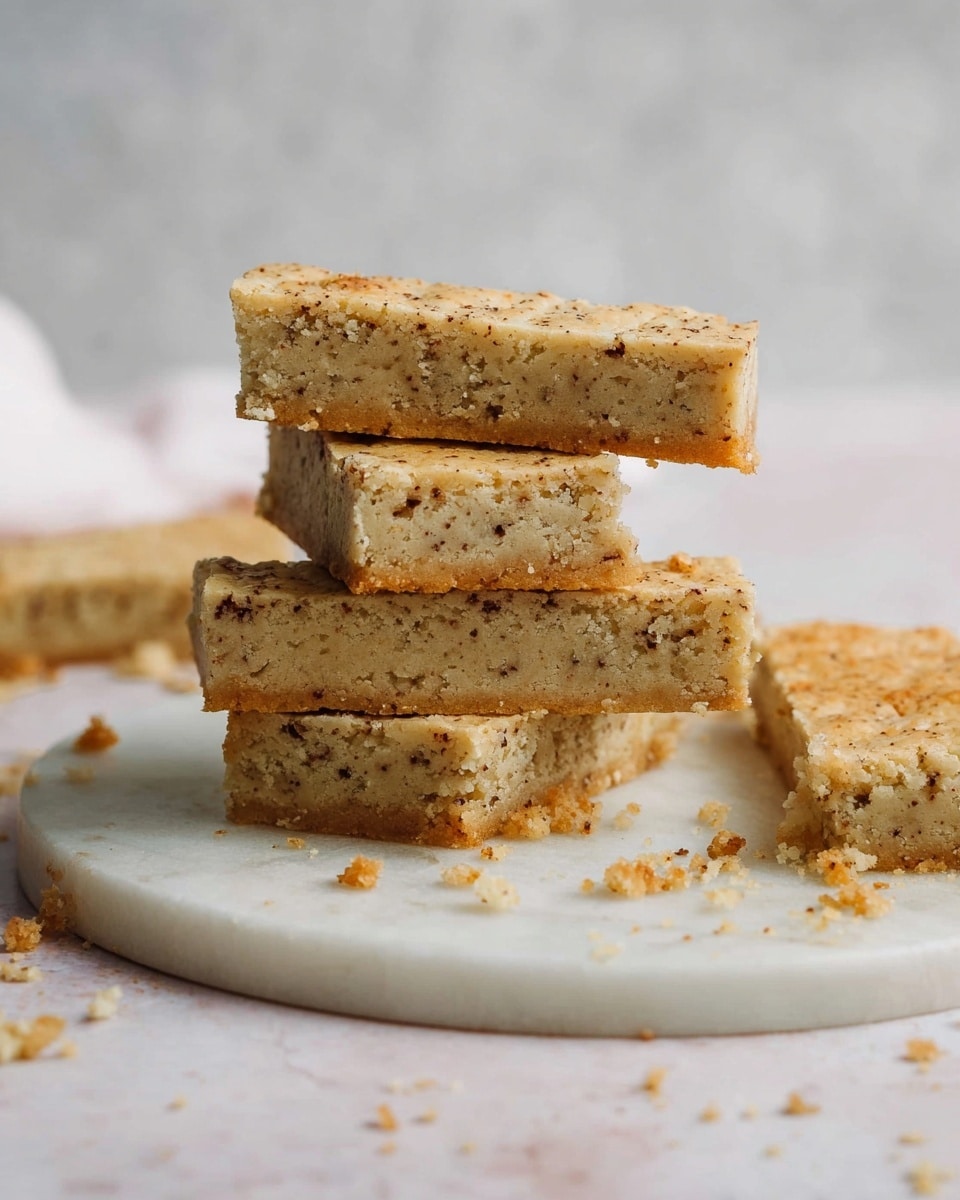
Garnishes
I like to keep it simple with a light dusting of powdered sugar or a few extra rosemary leaves scattered on top for presentation. For a little extra indulgence, a thin brush of melted white chocolate drizzled over the cooled cookies really impresses guests without overpowering the savory flavors.
Side Dishes
These shortbread cookies pair wonderfully with a warm cup of Earl Grey or herbal tea, but I’ve also enjoyed them alongside sharp cheeses like aged cheddar or goat cheese for a unique sweet-savory combo at gatherings.
Creative Ways to Present
For holiday parties, I like to stack the shortbread cookies tied with twine and small rosemary sprigs, turning them into edible gifts or beautiful table favors. You could also arrange them on a rustic wooden board alongside fresh fruit and cheese for an inviting snack spread.
Make Ahead and Storage
Storing Leftovers
After completely cooling, I store leftover shortbread in an airtight container at room temperature. This keeps them perfectly crisp for up to a week—sometimes longer if kept well sealed away from humidity.
Freezing
I’ve successfully frozen these cookies both before and after baking. When frozen raw dough is tough to cut, so I usually bake first, cut, and then freeze the cookies separated by parchment layers. They thaw within a couple of hours at room temperature and still taste freshly baked.
Reheating
To refresh their crispness after storage, I pop the cookies in a 300°F (150°C) oven for about 5 minutes. This warms them gently without drying them out, reviving that beautiful buttery crunch I love.
FAQs
-
Can I substitute dried rosemary for fresh in this Salted Rosemary Shortbread Recipe?
Yes, you can use dried rosemary if fresh isn’t available, but I recommend using about half the amount since dried herbs have a more concentrated flavor. Crushing it finely before mixing helps release the oils and enhance the aroma, but fresh rosemary definitely adds a brighter, fresher flavor.
-
Why does this recipe include rice flour?
The rice flour contributes to a wonderfully crisp and light texture that traditional shortbread can sometimes lack. It helps create that perfect snap without making the cookies too dense, so don’t skip it!
-
Can I double the recipe for a larger batch?
Absolutely! Doubling the Salted Rosemary Shortbread Recipe works well, just be sure to use a larger pan or split the dough between two pans. Also, keep an eye on baking time as it may vary slightly with more dough, but the texture and flavor hold up beautifully when scaled.
-
How can I prevent the shortbread from sticking to the pan?
Using parchment paper with an overhang on two sides makes lifting the shortbread out a breeze and prevents sticking. After baking, cutting while warm and running a thin spatula around the edges before cooling also helps loosen the cookies from the pan.
Final Thoughts
This Salted Rosemary Shortbread Recipe has become one of my favorite go-to treats whenever I want something that feels fancy but is actually easy to pull off. I love sharing these cookies with friends because they always spark compliments and surprise people with that perfect salty-herb-citrus combo. If you haven’t tried it yet, give it a whirl—you might just discover your new favorite shortbread too.
Print
Salted Rosemary Shortbread Recipe
- Prep Time: 1 hour 10 minutes
- Cook Time: 35 minutes
- Total Time: 1 hour 45 minutes
- Yield: 3 dozen cookies
- Category: Baking
- Method: Baking
- Cuisine: American
Description
Salted Rosemary Shortbread is a delightful, buttery cookie infused with fresh rosemary and a hint of grapefruit zest, topped with flaky sea salt for a perfect balance of savory and sweet flavors. These crisp and tender cookies make an elegant treat for any occasion.
Ingredients
Dry Ingredients
- 1 1/2 cup (180g) unbleached all-purpose flour
- 1/3 cup (43g) rice flour
- 1/2 teaspoon kosher salt, plus more to taste
- 2 tablespoon fresh rosemary, finely chopped
Wet Ingredients
- 1 cup (2 sticks, 1/2 pound, or 227g) unsalted butter, room temperature
- 1/2 cup plus 1 tablespoon (112g) granulated sugar, divided
- 2 teaspoon finely grated grapefruit zest
Topping
- Flaky sea salt, for topping
Instructions
- Prepare the Pan: Line an 8 x 8-inch (20 x 20 cm) baking pan, preferably glass, with parchment paper, leaving an overhang on two sides for easy removal later.
- Mix Dry Ingredients: In a bowl, whisk together the all-purpose flour, rice flour, finely chopped rosemary, and kosher salt. Set this mixture aside.
- Cream Butter and Sugar: Using the paddle attachment of a stand mixer, beat the unsalted butter, 1/2 cup granulated sugar, and grapefruit zest on medium-high speed until the mixture is light and fluffy, about 2 to 3 minutes. Scrape down the bowl as needed for even mixing.
- Combine Dough: Add the reserved dry flour mixture to the creamed butter mixture. Beat on low speed until the dough becomes crumbly, then increase to medium speed and beat until well combined, approximately 2 minutes. Scrape down the sides of the bowl as needed.
- Press Dough into Pan: Transfer the dough into the prepared pan and use an offset spatula to spread and press the dough evenly, smoothing the surface. Chill the dough in the refrigerator until firm, about 1 hour.
- Preheat Oven and Prepare Shortbread: Preheat your oven to 375°F (190°C). Prick the chilled dough all over with a fork. Evenly sprinkle the remaining 1 tablespoon sugar over the dough, then add a light sprinkling of flaky sea salt on top.
- Bake: Bake the shortbread until the edges turn golden brown and the surface is evenly golden, about 30 to 35 minutes.
- Cut While Warm: Remove the shortbread from the oven and immediately cut into four 2-inch wide strips along the length. Rotate the pan 90 degrees and cut eight 1-inch wide strips perpendicular to the first cuts, creating 32 rectangular cookies. Let the pan sit for 10 minutes.
- Loosen Cookies: Run a thin spatula around the edges and between cookies to prevent sticking as it cools completely in the pan.
- Remove and Separate: Using the parchment overhang, lift the shortbread from the pan. If needed, retrace cuts to separate individual cookies.
- Storage Note: These cookies can be baked, cut, and cooled up to one week in advance. Store them in an airtight container at room temperature, or freeze for up to 3 months for longer preservation.
Notes
- Use parchment paper in the pan with overhang for easy removal of the shortbread.
- Pressing the dough evenly and chilling before baking helps achieve the ideal texture.
- Sprinkling flaky sea salt on top elevates the flavor balance of sweet and savory.
- Cutting the shortbread immediately after baking keeps the edges clean and neat.
- Store cookies in an airtight container at room temperature for up to a week or freeze for up to 3 months.
Nutrition
- Serving Size: 1 cookie (approx. 24g)
- Calories: 110
- Sugar: 5g
- Sodium: 55mg
- Fat: 8g
- Saturated Fat: 5g
- Unsaturated Fat: 2.5g
- Trans Fat: 0g
- Carbohydrates: 11g
- Fiber: 0.3g
- Protein: 1g
- Cholesterol: 20mg

